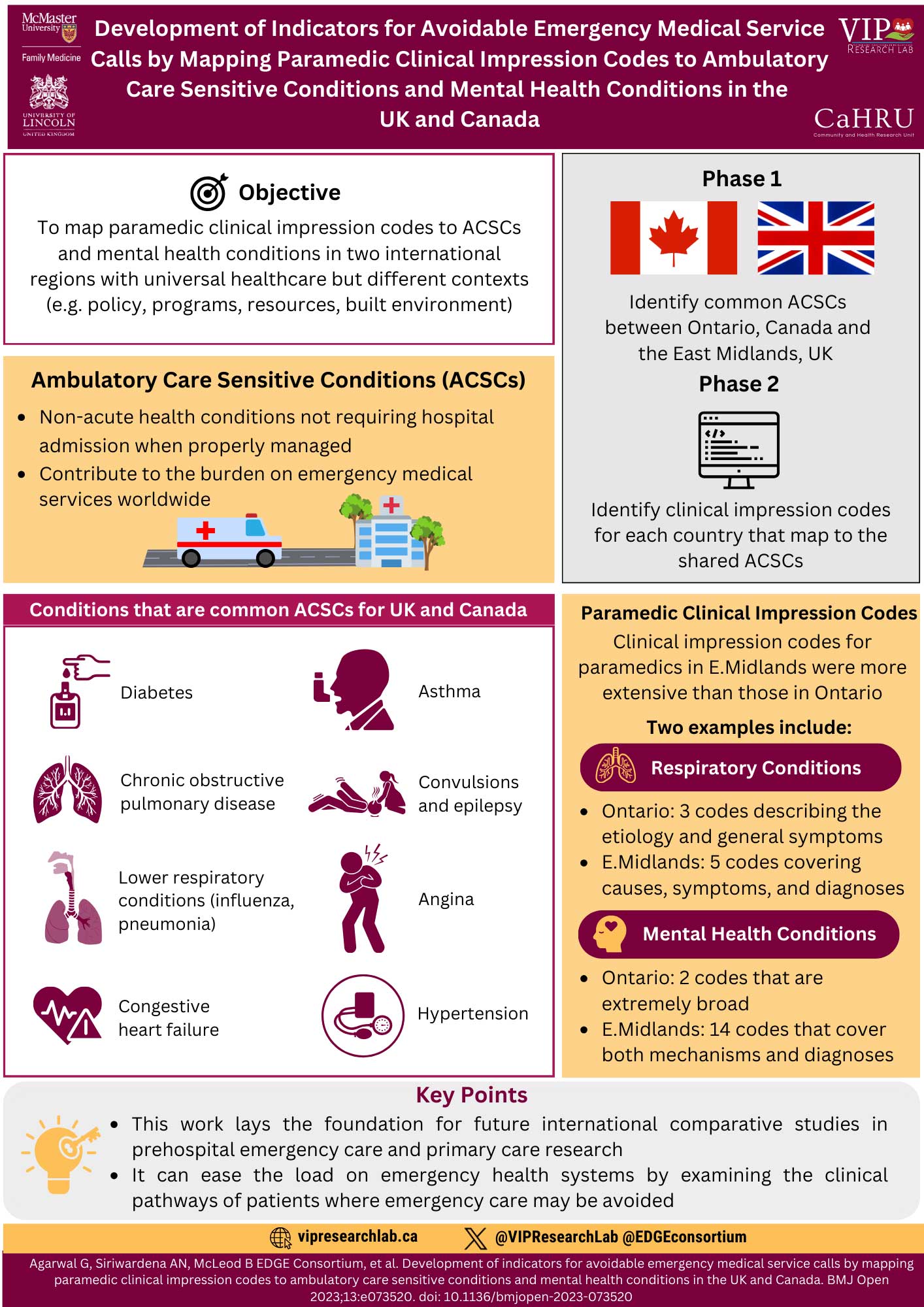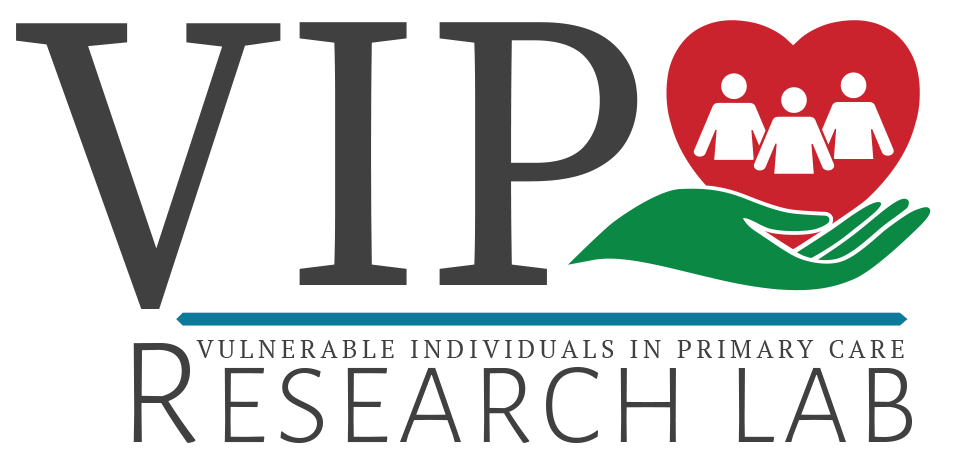
The title written at the top of this infographic is Development of Indicators for Avoidable Emergency Medical Service Calls by Mapping Paramedic Clinical Impression Codes to Ambulatory Care Sensitive Conditions and Mental Health Conditions in the UK and Canada. Beside the title, on the left are the logos for McMaster University Family Medicine and the University of Lincoln United Kingdom. To its right are logos for the VIP Research Lab and Community and Health Research Unit. Below the title are two columns. At the top of the left column in a box outlined in burgundy is a subheading titled Objective with an icon to its left of a dart board with a dart in the center. Below that is a yellow box with the subheading Ambulatory Care Sensitive Conditions (ACSCs) with two bullet points beneath it that say Non-acute health conditions not requiring hospital admission when properly managed and Contribute to the burden on emergency medical services worldwide. Below these points, in the same yellow box is an icon of an ambulance driving to a hospital. Underneath the yellow box is a box outlined in burgundy, with the subheading Conditions that are common ACSCs for the UK and Canada written in white on a burgundy banner. Within this box, there are two columns with 4 burgundy icons each and text in black beside them. On the left is an icon of a glucose blood test being administered on someone’s finger with the word diabetes beside it. Below is an icon representing lungs with the text Chronic obstructive pulmonary disease beside it. Under that is an icon representing the respiratory tract with text beside it saying Lower respiratory conditions (influenza, pneumonia). Below that is an icon of a heart with an electrical signal running through it and a caution symbol beside it. The text beside that says Congestive heart failure. In the right column of the box outlined in burgundy is an icon of a person using an inhaler with the text asthma written beside it. Below that is an icon of someone on the floor experiencing a seizure with another person holding their head. The text beside it says Convulsions and epilepsy. Below that is an icon of a person clutching their heart with text beside it saying Angina. Under that is an icon of a blood pressure monitor with the text Hypertension beside it. Below the infographic title in the right column is a grey box with the subheading Phase 1 in bold. Beneath that is a flag of Canada and the United Kingdom with text below it that says Identify common ACSCs between Ontario, Canada, and the East Midlands, UK. Below that is a second subheading in the same box titled Phase 2 in bold with an icon of a computer below it and text saying Identify clinical impression codes for each country that map to the shared ACSCs below that. Below the grey box is a yellow box with the subheading Paramedic Clinical Impression Codes with text below it saying Clinical impression codes for paramedics in E.Midlands were more extensive than those in Ontario. There is another subheading below that says Two examples include: In an elongated burgundy oval background there is text saying Respiratory Conditions. There are two bullet points beneath that with text that says Ontario: 3 codes describing the etiology and general symptoms and E.Midlands: 5 codes covering causes, symptoms, and diagnoses. Below that is another elongated burgundy oval with an icon of a person’s head with a heart symbol in their brain and text in white beside it saying Mental Health Conditions. Below that are two bullet points saying Ontario: 2 codes that are extremely broad and E.Midlands: 14 codes that cover both mechanisms and diagnoses. Near the bottom of the page, there is a yellow box with the subheading Key Points in burgundy. Below that are two bullet points with text saying This work lays the foundation for future international comparative studies in prehospital emergency care and primary care research and It can ease the load on emergency health systems by examining the clinical pathways of patients where emergency care may be avoided. To the left of the bullet points is a yellow icon of a lightbulb with a key going through it. Across the bottom of the infographic from left to right is a website icon accompanied by the website name vipresearchlab.ca and the logo for the social media platform X accompanied by the handles @VIPResearchLab and @EDGEconsortium.
